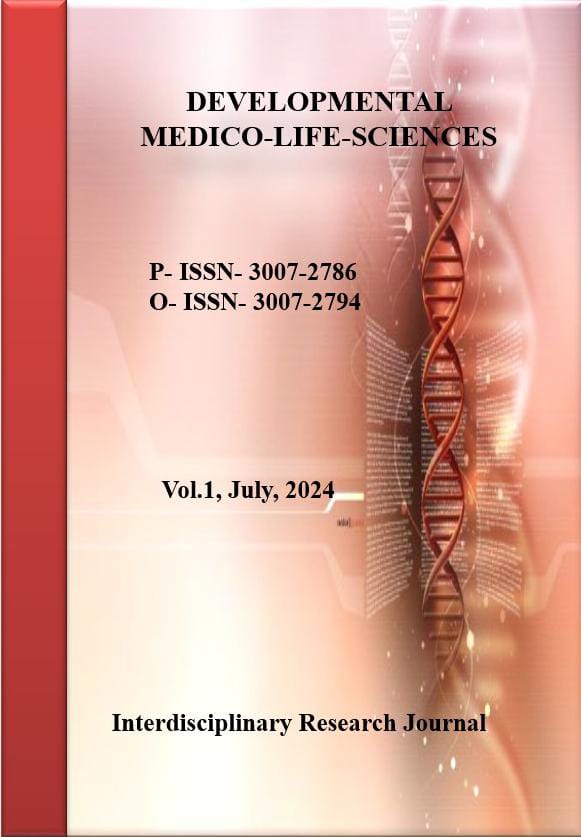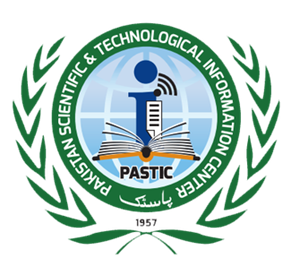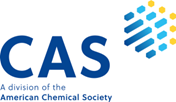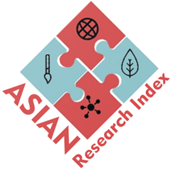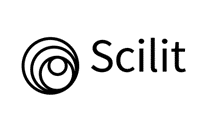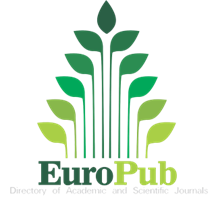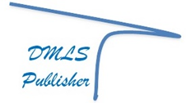Impedance-Modified Injection Solutions in Endoscopic Removal of Gastrointestinal Lesions: A Randomized Controlled Trial
Enhancing Endoscopic Resection with Impedance-Modified Solutions
DOI:
https://doi.org/10.69750/dmls.01.05.047Keywords:
Impedance-modified solutions, endoscopic mucosal resection, EMR, endoscopic submucosal dissection, ESD, gastrointestinal lesions, en-bloc resection, procedure time, histopathological assessment, submucosal elevation.Abstract
Background: The efficiency of endoscopic mucosal resection (EMR) and endoscopic submucosal dissection (ESD) is related to the electrical impedance of the injection solutions. It is therefore possible to postulate that improving impedance may enhance resection rates while minimizing the risks.
Objective: To assess the effectiveness and the side effects of impedance-modified injection solutions in the endoscopic resection of gastrointestinal lesions.
Methods: This study was a randomized controlled trial of patients with gastrointestinal lesions greater than 20mm in size The patients were randomly assigned to receive standard saline solution or an impedance-modified injection solution during EMR/ESD. The first end-point of the study was the en-bloc resection rate. Other related measures were procedure duration, complication profiles, and histological characteristics. Data were analyzed using SPSS version 27.0 and statistical significance was set at p≤0.05.
Results: The impedance-modified group had a statistically higher en-bloc resection rate as compared to the standard saline group at 85 percent against 65 percent respectively, p<0.05 The procedure taking times were less in the impedance-modified group and complication rates are also less though not reaching the statistical difference.
Conclusion: The enhancement of EMR/ESD by using impedance-modified injection solutions indicates new direction in endoscopic practice.
Downloads
References
Lösle M, Grund KE, Duckworth-Mothes B. Removal of GIT lesions and the role of impedance of the injection solution-an innovative approach to known methods. J Mol Med (Berl). 2024;102(8):1009-13.doi:10.1007/s00109-024-02457-1
Kaltenbach T, Anderson JC, Burke CA, Dominitz JA, Gupta S, Lieberman D, et al. Endoscopic Removal of Colorectal Lesions— ;Recommendations by the US Multi-Society Task Force on Colorectal Cancer. Gastroenterology. 2020;158(4):1095-129.doi:10.1053/j.gastro.2019. 12.018
Uraoka T, Saito Y, Yamamoto K, Fujii T. Submucosal injection solution for gastrointestinal tract endoscopic mucosal resection and endoscopic submucosal dissection. Drug design, development and therapy. 2009;2:131-8.doi: 10.2147/DDDT.S3219
Sportes A, Cfm J, Gromski MA, Koehler P, Seif Amir Hosseini A, Kauffmann P, et al. Novel modified endoscopic mucosal resection of large GI lesions (> 20 mm) using an external additional working channel (AWC) may improve R0 resection rate: initial clinical experience. BMC Gastroenterol.2020;20(1):195.doi:10.1186/s12876-020-01344-6
Akcelik A, Miller C, Bakhos C, Abbas A, Petrov R. Endoscopic interventions in the management of the gastroesophageal reflux: a narrative review. Annals of Esophagus. 2021;6.doi: 10.21037/aoe-21-52
Nabi Z, Reddy DN. Endoscopic Management of Gastroesophageal Reflux Disease: Revisited. Clin Endosc. 2016;49(5):408-16.doi: 10.5946/ce.2016 .133
Lee DP, Chang KJ. Endoscopic Management of GERD. Digestive Diseases and Sciences. 2022;67(5):1455-68.doi:10.1007/s10620-022-07390-2
Schluckebier D, Afzal NA, Thomson M. Therapeutic Upper Gastrointestinal Endoscopy in Pediatric Gastroenterology. Frontiers in Pediatrics 2022;9.doi: 10.3389/fped.2021.71591 2
Nanda KS, Bourke MJ. Endoscopic mucosal resection and complications. Techniques and Innovations in Gastrointestinal Endoscopy.88-95.doi: 10.1016/j.tgie.2012.12.002
Nassani N, Alsheikh M, Carroll B, Nguyen D, Carroll RE. Theranostic Gastrointestinal Endoscopy: Bringing Healing Light to the Lumen. Clinical and Translational Gastroenterology. 2020;11(3):e00119.doi: 10.14309/ctg.0000000000000119
Masood M, Low DE, Deal SB, Kozarek RA. Endoscopic Management of Post-Sleeve Gastrectomy Complications. Journal of Clinical Medicine.2024;13(7):2011.doi: 10.3390/jcm1307 2011
Rodríguez-Luna MR, Perretta S. Endoscopy in surgery. Frontiers in Gastroenterology. 2023;2.doi: 10.3389/fgstr.2023.1186945
Lui TKL, Tsui VWM, Leung WK. Accuracy of artificial intelligence–assisted detection of upper GI lesions: a systematic review and meta-analysis. Gastrointestinal Endoscopy. 2020;92(4):821-30.e9.doi:10.1016/j.gie.2020.06.034
Sadeghi A, Zali MR, Tayefeh Norooz M, Pishgahi M, Ketabi Moghadam P. Management of gastrointestinal subepithelial lesions: an answer to the conflicting opinions. Gastroenterol Hepatol Bed Bench. 2023;16(4):378-85.doi: 10.22037/ ghfbb.v16i4.2690
Schiavoni G, Messina B, Scalera S, Memeo L, Colarossi C, Mare M, et al. Role of Hippo pathway dysregulation from gastrointestinal premalignant lesions to cancer. Journal of Translational Medicine. 2024;22(1):213.doi: 10.1186/s12967-024-05027-8
Linked Color Imaging Focused on Neoplasm Detection in the Upper Gastrointestinal Tract. Annals of Internal Medicine. 2021;174(1):18-24.doi: 10.7326/m19-2561 %m 33076693
Al-Taie OH, Bauer Y, Dietrich CG, Fischbach W. Efficacy of submucosal injection of different solutions inclusive blood components on mucosa elevation for endoscopic resection. Clin Exp Gastroenterol. 2012;5:43-8.doi: 10.2147/ceg.S29 704
Usta M, Ersoy A, Ayar Y, Ocakoğlu G, Yuzbasioglu B, Erdem ED, et al. Comparison of endoscopic and pathological findings of the upper gastrointestinal tract in transplant candidate patients undergoing hemodialysis or peritoneal dialysis treatment: a review of literature. BMC Nephrology. 2020;21(1):444.doi: 10.1186/s12882-020-02108-w
Misra V, Agrawal R, Misra SP. Portal hypertensive vasculopathy – An entity worth remembering with non-neoplastic gastrointestinal lesions. Indian Journal of Pathology and Microbiology. 2021;64(Suppl1):S32-S42.doi:10.4103/ijpm_20 1_21
Zheng Y, Shabana A, Elsayes KM, Hamid A, Abdelaziz A, Menias CO, et al. Cross-Sectional Imaging Evaluation of Vascular Lesions in the Gastrointestinal Tract and Mesentery. Journal of Computer Assisted Tomography. 2020;44(6):870-81.doi: 10.1097/rct.0000000000001107
Wen W, Shi C, Shi Y, Ji G, Wu P, Fan Z, et al. A pilot animal and clinical study of autologous blood solution compared with normal saline for use as an endoscopic submucosal cushion. Exp Ther Med. 2012;4(3):419-24.doi:10.3892/etm.2012.62 6
Minoda Y, Ihara E, Komori K, Ogino H, Otsuka Y, Chinen T, et al. Efficacy of endoscopic ultrasound with artificial intelligence for the diagnosis of gastrointestinal stromal tumors. Journal of Gastroenterology. 2020;55(12):1119-26.doi: 10.1 007/s00535-020-01725-4
Kim YJ, Kim ES, Cho KB, Park KS, Jang BK, Chung WJ, et al. Comparison of clinical outcomes among different endoscopic resection methods for treating colorectal neoplasia. Dig Dis Sci. 2013;58(6):1727-36.doi:10.1007/s10620-013-25 60 -x
